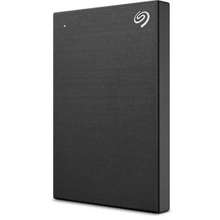


The same behavior is seen in the Seagate Backup Plus Portable 5TB drive also. This results in the drop of the instantaneous write rates to 10 MBps periodically. It can be seen that the firmware tries to avoid these slow write scenarios as much as possible (almost a hour of sustained sequential writes), but, the amount of traditional PMR space in the platters eventually runs out and the drive is forced to record to the shingled space. Worryingly, we have drops down to 10 MBps frequently. The Seagate Backup Plus Slim, on the other hand, starts off between 125 and 135 MBps and ends up between 60 and 80 MBps. This drop (based on the sector location in the drive's platters) is a well-known phenomenon due to the presence of a larger number of sectors on a per-revolution basis as we move further away from the center of the platter. We see a gradual steady drop down to 50-70 MBps as we move towards the center. We see the bandwidth numbers between 90 MBps and 110 MBps as we start off at the outer edge of the platters. First off, we take a look at the processing of this workload on a CMR drive - the WD My Passport 4TB. This 128K sequential write workload was set to span the entire capacity of the drive. The fio workload used for this purpose was adapted for running on the external hard drives. One of the tests we have recently started doing on flash-based storage devices is performance consistency under extremely stressful sequential write workloads.
Detecting SMR - The Sequential Writes Test

With the passage of time, Seagate has improved the firmware to such an extent that the tests detailed in the link above can no longer reliably detect the presence of SMR in a drive. While the Archive HDD (one of the first SMR drives from Seagate that went into mass production) had dismal performance consistency, the Innov8 carried substantially improved firmware that enabled much better overall performance numbers. Our first tryst with SMR in the lab was the 8TB Seagate Archive HDD, followed by the retail-focused Seagate Innov8. Even replaying real-world work traces often only provides slight hints about the presence of SMR. Its IP55 rating lets you know that it’s water- and dust-resistant while its durable, silicon rubber coating delivers higher impact resistance.The nature of the platters in a hard drive (CMR or SMR), unless explicitly mentioned, is not immediately evident from the specifications or even artificial benchmark tests that use a small work set. Ruggedized design with a forged aluminum body protects the SSD core and dissipates heat.Save time moving and editing your files with our lightning-fast, in-house NVMe technology that dramatically increases transfer speeds to up to 1050MB/s.**.


 0 kommentar(er)
0 kommentar(er)
